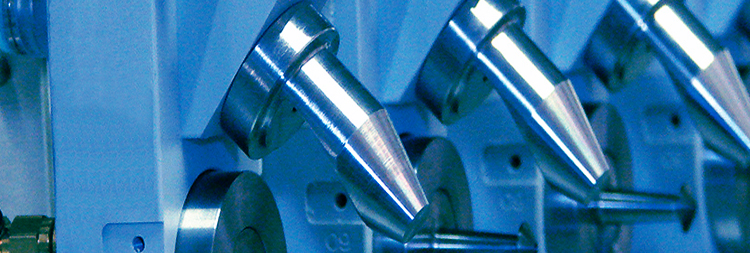google-site-verification: google0228a1feb97d321e.html
google-site-verification: google0228a1feb97d321e.html
google-site-verification: google0228a1feb97d321e.html
google-site-verification: google0228a1feb97d321e.html
google-site-verification: google0228a1feb97d321e.html
google-site-verification: google0228a1feb97d321e.html
The scattering type ultrasonic nozzle, through the special vortex channel design will transform the carrier gas into a uniform rotating air flow, so that the liquid mist after ultrasonic atomization is a whirlwind form of scattering ejection, expand the spraying area of the ultrasonic nozzle can also be sprayed on the vertical or curved surface with Angle substrate. The scattering ultrasonic atomizer is especially suitable for semiconductor photoresist spray with surface microstructure (semiconductor coating).

Ultrasonic spray coating
The scattering type nozzle

YMUS-K

Device Features
◆ Wide spraying, spraying width: 40-150mm;
◆ Uniform coating: uniformity >95%;
◆ Save raw material: Raw material utilization rate up to 85%, 4 times the traditional two-fluid spraying;
◆ Fine atomizing particles;
◆ Uniform atomizing particles;
◆ Can realize intermittent or continuous spraying;
Application
◆ New energy: fuel cell, membrane electrode, thin film solar cell, proton exchange membrane, etc;
◆ Medical treatment: balloon catheter, blood collection syringe, stent, biosensor, microfluidic chip, etc;
◆ Microelectronics semiconductor electronics: flux, photoresist coating, conductive coating, hydrophilic and hydrophobic coating, etc;
◆ Glass production: glass coating, float glass, photovoltaic glass, photoresistance film, transparent conductive, etc;
◆ Nanotechnology: carbon nanotube, polymer fiber, nano-film, etc;


Ultrasonic spray coating
The scattering type nozzle

YMUS-K

Device Features
◆ Wide spraying, spraying width: 40-150mm;
◆ Uniform coating: uniformity >95%;
◆ Save raw material: Raw material utilization rate up to 85%, 4 times the traditional two-fluid spraying;
◆ Fine atomizing particles;
◆ Uniform atomizing particles;
◆ Can realize intermittent or continuous spraying;
Application
◆ New energy: fuel cell, membrane electrode, thin film solar cell, proton exchange membrane, etc;
◆ Medical treatment: balloon catheter, blood collection syringe, stent, biosensor, microfluidic chip, etc;
◆ Microelectronics semiconductor electronics: flux, photoresist coating, conductive coating, hydrophilic and hydrophobic coating, etc;
◆ Glass production: glass coating, float glass, photovoltaic glass, photoresistance film, transparent conductive, etc;
◆ Nanotechnology: carbon nanotube, polymer fiber, nano-film, etc;
